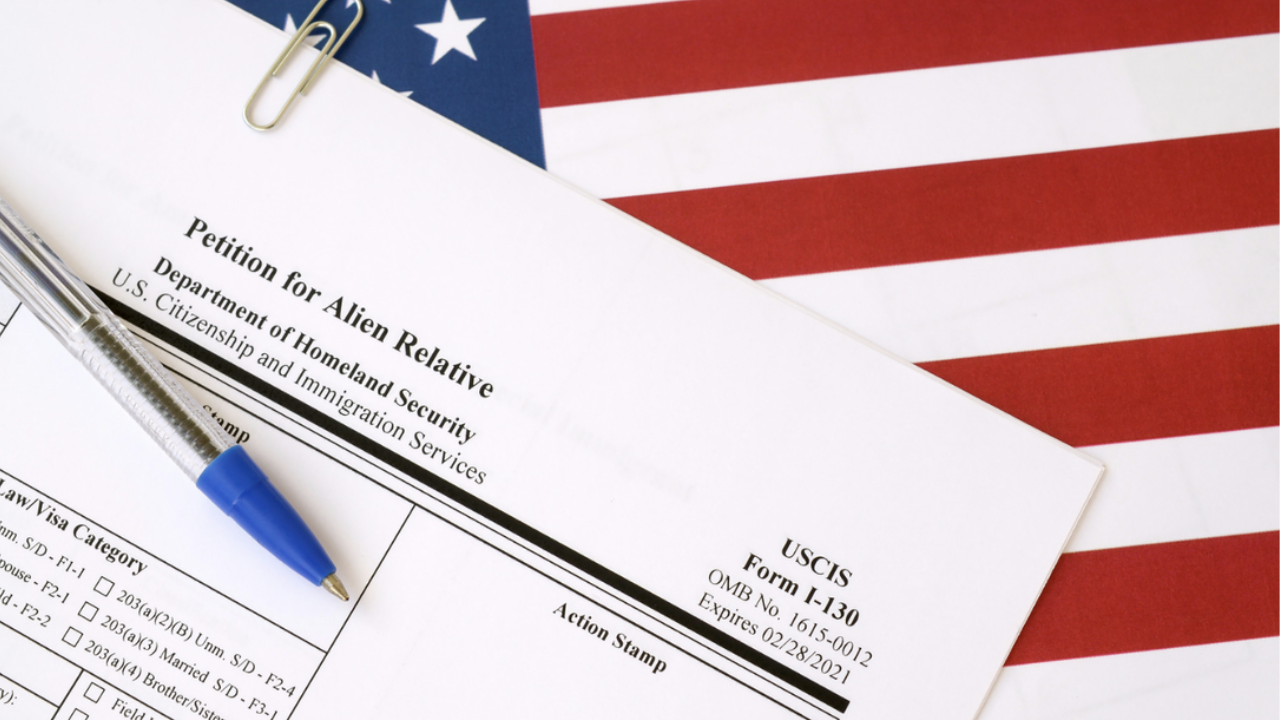Form I-130A: Everything You Need to Know
If you are applying for a green card through marriage, understanding and correctly completing Form I-130A is vital. As a supplemental document to Form I-130 (Petition for Alien Relative), Form I-130A collects biographical details about the non-U.S. citizen spouse. Inaccuracies or omissions can delay your case—or worse, lead to denial.
This guide will break down everything you need to know about Form I-130A, including its purpose, who must file it, how to fill it out, common mistakes, and answers to frequently asked questions. Whether you’re preparing your own application or assisting someone else, this comprehensive breakdown ensures your submission is accurate and complete.
What Is Form I-130A?
Form I-130A, officially known as Supplemental Information for Spouse Beneficiary, is used by U.S. Citizenship and Immigration Services (USCIS) to gather personal and background information about the non-citizen spouse. It accompanies Form I-130 when the petitioner is filing on behalf of their foreign-born spouse.
The information collected on Form I-130A helps USCIS verify:
- The authenticity of the marriage
- Background history of the spouse
- Residence and employment details
- Parental information
- Immigration history, if any
Who Must Submit Form I-130A?
Form I-130A is required when:
- A U.S. citizen or lawful permanent resident is petitioning for their spouse
- The beneficiary spouse (the one seeking a green card) is not a U.S. citizen
Even if the spouse is outside the U.S., Form I-130A must be completed and signed. However, a wet signature is not required in such cases; the form can be submitted unsigned if the spouse is abroad.
When and Where to Submit Form I-130A
You should submit Form I-130A together with Form I-130 as part of the initial green card petition packet. Do not send it separately.
Send the completed Form I-130A to the same USCIS address where you file Form I-130—this depends on your location and whether you’re filing from inside or outside the U.S. Always check the latest USCIS instructions.
How to Fill Out Form I-130A: Section by Section
Let’s go through each section of Form I-130A:
Part 1: Information About You (Beneficiary Spouse)
This section captures personal details such as:
- Full name (including other names used)
- Physical and mailing addresses for the past 5 years
- Date of birth, gender, country of birth
- Alien Registration Number (if any)
- Social Security Number (if any)
- I-94 Number (if applicable)
Be sure to list all previous addresses and employers within the past 5 years, including dates.
Part 2: Parental Information
This includes:
- Full names of your mother and father
- Dates of birth
- Places of birth
- Current city and country of residence
USCIS uses this data to cross-check background history, so accuracy is key.
Part 3: Employment History for Past 5 Years
- List each employer you’ve had in the past 5 years
- Include complete addresses and dates of employment
- Indicate if you were self-employed or unemployed
Part 4: Signature
If you’re in the United States, the beneficiary spouse must sign and date the form. If you’re outside the U.S., you can leave this blank, and your petition will still be processed.
Part 5 & 6: Interpreter and Preparer Information
If someone helped you fill out the form or translated it for you, they must complete this part.
Required Documents to Include with Form I-130A
Although Form I-130A is a standalone form, it is not submitted by itself. Include it with your Form I-130 application package along with:
- A copy of the marriage certificate
- Passport-style photos of both spouses
- Proof of U.S. citizenship or lawful permanent residence of the petitioner
- Documents demonstrating a bona fide relationship
Common Mistakes to Avoid When Completing Form I-130A
Many green card petitions are delayed due to avoidable errors on Form I-130A. Here are the top mistakes to watch out for:
- Leaving required fields blank – Always write “N/A” if a section doesn’t apply.
- Inconsistent addresses or employment history – Make sure this matches other immigration forms.
- Incorrect parental details – Verify names, birthplaces, and current residences.
- Wrong dates or timeline gaps – Don’t leave unexplained time gaps in your address or work history.
- Not signing the form (when required) – If the spouse is in the U.S., they must sign the form.
- Typos or illegible handwriting – Always type the form or write clearly in black ink.
Tips for Filing Form I-130A Successfully
- Download the latest version of the form from the official USCIS website.
- Review instructions thoroughly before starting.
- Double-check addresses and zip codes, especially if living abroad.
- Save a copy of the filled-out form for your records.
- Package it with Form I-130, and organize your documents neatly.
How USCIS Uses Form I-130A
USCIS uses Form I-130A as a tool to evaluate whether your marriage is real and meets the criteria for family-based immigration. Inconsistencies between Form I-130A, Form I-130, and other related documents may raise red flags.
For example:
- If your spouse’s work history contradicts a submitted affidavit
- If addresses don’t line up with utility bills or lease agreements
- If the form is unsigned when the spouse is in the U.S.
Being thorough with Form I-130A minimizes scrutiny and helps your case proceed faster.
Form I-130A Processing Time
There’s no separate processing time for Form I-130A. It’s reviewed alongside Form I-130, which generally takes 8 to 14 months, depending on your USCIS service center and case complexity.
What If I Made a Mistake on Form I-130A?
If you’ve already submitted the form and discover an error:
- If your case hasn’t been reviewed yet: Prepare a corrected form and send it to the USCIS office with a cover letter referencing your receipt number.
- If you’re called for an interview: Bring the corrected form with you and inform the officer of the mistake.
- Avoid white-out or strikethroughs: Always reprint the page or refile the form if changes are needed.
Do I Need a Lawyer to Fill Out Form I-130A?
You’re not required to hire a lawyer, but if:
- You’ve had visa denials in the past
- You or your spouse have a complex immigration history
- You’re unsure about how to document your relationship
… then speaking with an immigration attorney may be worthwhile. A lawyer can ensure your Form I-130A is consistent with all your immigration documents and minimize the chance of delays.
FAQ
Q1: What is the purpose of Form I-130A?
Form I-130A supplements Form I-130 by providing additional biographical and background information about the foreign spouse.
Q2: Who needs to sign Form I-130A?
If the spouse is in the United States, they must sign. If the spouse is outside the U.S., a signature is not required.
Q3: Can I submit Form I-130A online?
Currently, Form I-130A must be printed and mailed as part of your Form I-130 packet. It is not submitted online even if you file I-130 online.
Q4: Is Form I-130A required for fiancé(e) visa applications?
No, Form I-130A is only required for marriage-based green card applications. It is not used for K-1 fiancé(e) visas.
Q5: Can I fill Form I-130A by hand?
Yes, but typing is recommended to ensure clarity. If you handwrite, use black ink and write legibly.
Q6: What if I leave some sections of Form I-130A blank?
Leaving required fields blank can lead to Request for Evidence (RFE) or delays. Use “N/A” or “None” where applicable.
Q7: How many years of address and employment history does Form I-130A ask for?
It requires 5 years of both residence and employment history.
Q8: Is Form I-130A reviewed during the green card interview?
Yes, USCIS officers review all submitted documents, including Form I-130A, for consistency and red flags.
Q9: What happens if Form I-130A is missing from my packet?
USCIS may issue an RFE or reject your application entirely. Always include it with your Form I-130.
Q10: Can I get help from USCIS in filling out Form I-130A?
USCIS does not fill forms on your behalf, but their instructions and public resources can help you understand the form.
Conclusion: The Importance of Form I-130A in Your Green Card Journey
Form I-130A may seem like just another form in the immigration process, but it plays a critical role in proving the legitimacy of your relationship and background. Filing it correctly, truthfully, and thoroughly is one of the smartest steps you can take in your green card journey.
When combined with a strong Form I-130 and supporting documentation, a well-prepared Form I-130A strengthens your petition and increases your chances of a smooth approval process.
Stay connected for the latest news and updates on Ancientartz!






